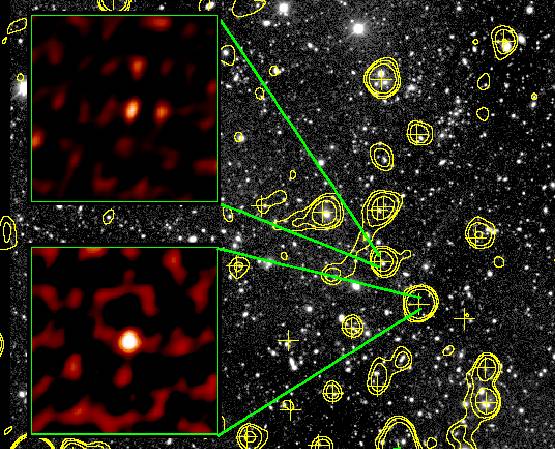Distant Galaxies in Radio Vision

Explanation:
Radio waves,
like visible light, are
electromagnetic radiation
and radio telescopes can "see" --
their signals translated into
radio images
of the cosmos.
While
individually
even the largest
radio telescopes have
very blurry vision compared
to their
optical
counterparts, networks of
radio telescopes can combine signals to
produce
sharper pictures.
In fact, using a supercomputer in New Mexico, USA and
technique called
VLBI
(Very Long Baseline Interferometry), the
European
network of radio telescopes
(
EVN)
have produced pictures of distant galaxies at a resolution
some three times higher than the Hubble Space Telescope.
Pentrating obscuring dust,
the false-color EVN
radio images are inset above
according to their relative location in
an optical image of the famous
Hubble Deep Field region of the sky.
(Yellow lines superimposed on the optical image are
radio intensity contours from a single telescope)
The bright cosmic radio source in the middle of each inset
corresponds to a galaxy.
Impressively, the radio sources appear to be so small,
less than about 600 light-years across in
actual size, that they are thought
to be associated
with massive
central black holes
in the distant deep field galaxies.
Authors & editors:
Robert Nemiroff
(MTU) &
Jerry Bonnell
(USRA)
NASA Web Site Statements, Warnings,
and Disclaimers
NASA Official: Jay Norris.
Specific
rights apply.
A service of:
LHEA at
NASA /
GSFC
& Michigan Tech. U.

